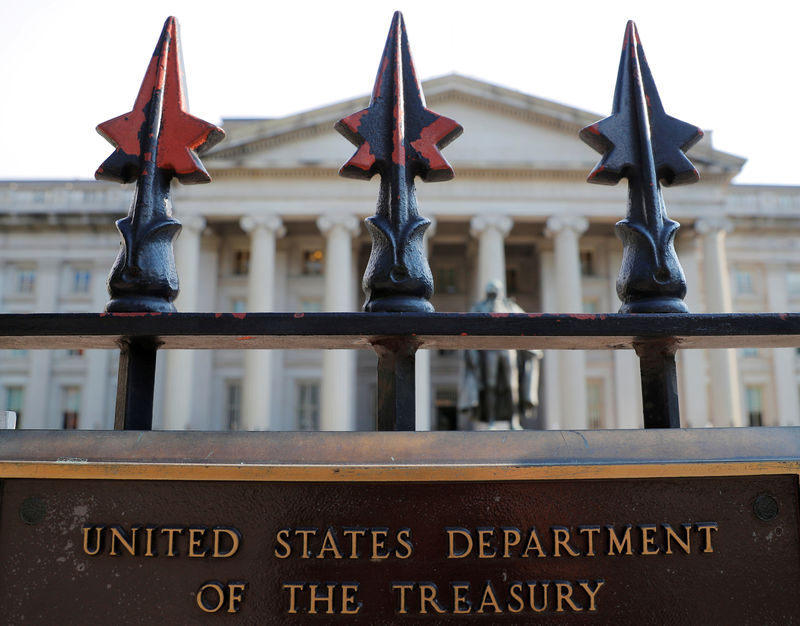(Bloomberg) -- The U.S. Treasury roughly halved its borrowing estimate for the final three months of the year, to $617 billion, after the fiscal stimulus that in August seemed imminent didn’t pan out.
The figure, released in Washington Monday, is $599 billion lower than the Treasury projected in August, when it expected to borrow $1.216 trillion in net marketable debt over the quarter. Since then, Washington policy makers have failed to agree on a new economic support package. The fate of future measures will likely depend now on the results of the Nov. 3 presidential and congressional elections.
The Treasury has still penciled in fiscal stimulus ahead, keeping with the $1 trillion estimate it made in August, while noting “significant uncertainty surrounding the fiscal impact of potential COVID-19 related legislation.” The department expects the spending to occur through the end of March, a senior official told reporters.
In wake of stimulus already put in place to fight the effects of the deadly virus, the U.S. budget deficit more than tripled, to a record $3.1 trillion in the latest fiscal year ending in September. That pushed the annual deficit as a share of gross domestic product to 16%, the largest since 1945.
The new borrowing figure is based on an estimated Treasury cash balance of $800 billion for the end of December, the same as the projection in August.
The Treasury has been sitting for weeks on a near record cash balance of about $1.7 trillion, with most strategists seeing the government clinging to the bigger-than-normal cash buffer to be able to quickly send out support checks to Americans if a fiscal package does get approved.
For the three months through March, the Treasury anticipates borrowing $1.127 trillion through net new marketable debt issuance, assuming a cash balance of $800 billion at the end of the three-month period.
How the Treasury’s financing forecasts on Monday will “translate into actual financing decisions will continue to depend on legislative developments -- or the lack thereof,” Wrightson ICAP (LON:NXGN) chief economist Lou Crandall wrote in a note published before the release of Monday’s report. “The outlook for the first quarter of 2021 is even murkier due to the enormous range of potential fiscal policy outcomes -- and to looming debt-ceiling complications next summer.”
The current debt ceiling suspension is due to expire by the end of July.
Monday’s borrowing estimates precede the Treasury’s so-called quarterly refunding announcement at 8:30 a.m. New York time on Wednesday, when the department releases plans for the sizes of auctions of longer-term debt, along with any shifts in its issuance strategy.
Wall Street dealers are mixed on whether the Treasury will boost the auction size up again to a fresh record, or pause to await more clarity on government spending plans. Given a hefty cash balance available, that offers the department space to hold off for now.
Read more: Bond Traders Face Whirlwind Week That’s Make-or-Break for 2020
©2020 Bloomberg L.P.
